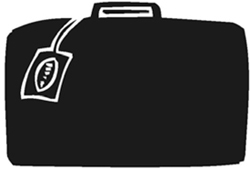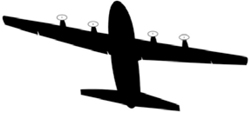Now I Know More (22 page)
Authors: Dan Lewis


WHEN SOON ISN'T SOON ENOUGH
Worst. Thing. Ever.
You've probably seen or heard someone say that, usually in a half-facetious, half-hyperbolic sense. (Or because you've watched the
Simpsons
and know who the Comic Book Guy, originator of the line, is.) When (real) people use that phrase, isolated as three individual pseudo-sentences for effect, they're not talking about actual terrible things like famine, the plague, or the Nazis. They're talking about the minor inconveniences that bother us in an amount disproportional to the actual harm we suffer. A quick search of Twitter elicits things like “not having somewhere to park my car,” “chapped lips,” and “having short hair on rainy days” as examples of things that were considered the “worst thing ever” by the Tweeter in question.
Here's another one: waiting.
Waiting is a particularly fiendish terror, which evokes the hyperbole just mentioned. People bemoan having to visit the Department of Motor Vehicles, grumble when YouTube videos take more than a half-second to load, and, as some airport executives in Houston learned, complain when it takes too long for their bags to come. We'd rather do anything other than, well, do nothing.
Unfortunately, we can't eliminate waiting altogether, and in some cases, even a relatively short wait may be too long. That's what the Houston airport execs learned when they answered passengers' complaints directly. Customers were waiting for a long while, perhaps as long as a half hour, for their bags to arrive. The airport beefed up staff and cut the wait time down to eight minutesâas the
New York Times
noted, that's “well within industry benchmarks.” Yet the complaints just kept coming. That's kind of ridiculousâit's only eight minutes!âbut regardless, customers still weren't happy. To make matters worse, there wasn't much the airport team could do to get the bags back to the flyers in less time. Eight minutes from disembark until the bags hit the carousel was as good as it was going to get.
But saying “deal with it!” is bad customer service, and really, no one wants to hear complaints from customers. So, as the
Times
explained, the powers that be at the Houston airport decided to just trick the passengers into thinking they weren't waiting. They observed that customers at other airports weren't complaining about baggage claims that weren't all that close to the arrival gates, yet the Houston airport only required passengers to walk for about a minute to get their stuff. On the other hand, Houston's customers were very upset about having to stand around for seven of the eight minutes. It wasn't the eight-minute delay, itself, that was the problemâit was that people hated the idea that they were wasting time, doing nothing.
The solution? The airport moved the arrival gates and the baggage claim carousels farther apart. Much farther. The formerly one-minute walk to get one's bag was now six minutes, and the idle wait only about two. The travelers were occupied for longer and therefore less bored, and the complaints disappeared.
The International Air Transit Association assigns three-letter airport codes to each airport, typically comprised of the first three letters of the city the airport is located in. There are many exceptions, though, and in those cases, a close-ish approximation of the airport's or city's name is used instead. New York City, for example, has both LaGuardia and Kennedy, which are LGA and JFK, as they can't start with Nâthe navy has that reserved. But what about LAX in Los Angeles? The X doesn't stand for anythingâit's just a placeholder. “LA,” the airport's original code, is unambiguous, but when the three-character codes became standard, the airport needed to expand its code. It adopted a meaningless X at the end.

WHY PILOTS AND COPILOTS CAN'T SHARE A MEAL
Redundancy and efficiency don't go well together. We wear belts
or
suspenders, not
and
, because having both would be unnecessary and the extra cost or discomfort isn't worth it. Sometimes, though, having a backup plan is a good idea, especially when the risk of failure is incredibly high. If you are operating a commercial airline, for example, it makes a lot of sense to have a pilot and a copilot, because if something happens to the pilot, you really need someone who can still fly the plane. Even if it ends up costing a little more.
Copilots are trained to do everything a pilot does, in case of emergency. However, there's one thing, for most airlines at least, that the copilot can't do. He or she cannot have the same meal as the pilot.
The copilot's job isn't simply to be the backupâhe or she assists in takeoffs, landings, and in a variety of in-flight duties, making sure that everything is being done properly and that the safety and best-practices checklists are followed. While most modern planes can be piloted by one person if need be, that's not a great idea, as people make mistakes (and in this case, mistakes can have massive consequences). In November 2012, for example, the copilot of a Lufthansa flight from Newark, New Jersey, to Frankfurt, Germany, became ill, and an off-duty pilot for another airline, who happened to be a passenger, helped land the plane. (The plane diverted to Dublin, Ireland, due to the copilot's illness.) While the passenger's skills lessened the potential problem, it isn't fair to say he prevented a disaster, though; the flight crew could have assisted the pilot sufficiently to land the plane safelyâmost likely.
It's rare, however, that both the pilot and copilot will become incapacitated, save for something truly nefarious such as a hijacking. One exception? Food poisoning.
As recounted by a
New York Times
article
from March 1984, there have been numerous times when flights were put at risk by contaminated food. In 1982, for example, a flight from Boston to Lisbon had to return to Massachusetts after both the pilot and copilot (and six others) fell ill from eating bad tapioca pudding. In 1975, roughly a third of a 364-person flight going from Tokyo to Paris became ill after eating eggs containing staphylococcal bacteria. The only reason the pilot and copilot didn't get sick? Their internal clocks were on a different schedule, and instead of eating breakfast, they dined on steakâdinner. The
Times
article advocated for rules that prevented pilot and copilot from sharing meals, something not regulated at the time.
As the BBC reported in 2009, that has mostly changed. That year, the pilot on a Continental flight from Brussels to Newark died in mid-flight; however, the flight ended safely. As the BBC noted, “The main reason for having two pilots is that something like this occasionally happensâthough it's less common for a pilot to die than to be incapacitated by something like food poisoning.” Because of that concern, today's airlines, by and large, require that the copilot not eat the same meals as the pilot.
Who gets first choice? That's left unreported, but it would be surprising if the head pilot doesn't get that privilege.
Making good-tasting airline food is very difficult, perhaps for a surprising reason. According to Alaska Airlines' corporate chef Clifton Lyles (via NPR), at an airplane's cruising altitude, our taste buds are about 25 percent less effective than normal. From the article: “As the cabin is pressurized and the humidity inside the plane falls, some of your taste buds go numb, and your sense of smell is diminished, too. Things that tasted great on the ground are now bland and boring.”

THE RIGHT MAN IN THE RIGHT PLACE AT THE WORST TIME
On September 11, 2001, terrorists hijacked four American commercial jets with the intention of crashing them into large, visible buildings in Washington, DC, and New York City. As we all know, the terrorists were successful in three of the four cases; the fourth plane's assault on the United States Capitolâthe presumed targetâwas thwarted by the heroic passengers on board. While we now believe that no other planes were targeted, each of the other 4,000-plus flights scheduled to be in American air space at the time were at risk. But Ben Sliney, the Federal Aviation Commission's National Operations Manager on duty that morning, prevented future harm.
How? He made an unprecedented decision, grounding every single commercial airplane in the country.
That, of course, is not newsâin fact, it's common knowledge. While hindsight teaches us that the call was correct, at the time it was an aggressive decision. Thankfully, it was the type of decision that Sliney was well equipped to make. He had twenty-five years of experience in air traffic control and/or as part of FAA management, including a leadership position at
New York TRACON
, which has responsibility over the air traffic for New York City's three major airports and a few smaller regional airports nearby. His position as National Operations Manager gave him immediate access to information as it became available. But the decision to ground the planesâthat was Sliney's to consider, and ultimately, to make.
In all, Ben Sliney's initiative makes for an incredible story. When Universal Pictures decided to turn the heroism of the passengers of United Flight 93 into a movie, they did not overlook Ben Sliney's roleâthey even asked him to play himself in the movie.
As incredible as his story is, one particular fact makes it jaw dropping: On September 10, 2001, Ben Sliney was not yet a National Operations Manager for the FAA. September 11, 2001, was Sliney's first day on the job.
During the three-day ban on commercial flights after the September 11 attacks, very few planes were in the skyâby and large, air traffic was limited to military flights. (One exception? A San Diego to Miami flight, authorized to take flight in order to deliver antivenin to a snake-bite victim.) Because of the lack of planes, there was also a lack of contrails, those white, cloud-like tracks planes leave in the sky. The lack of contrails corresponded to a measurable, significant increase in temperature, leading some to believe that contrails help depress global warmingâa theory echoed by World War II data as well.
